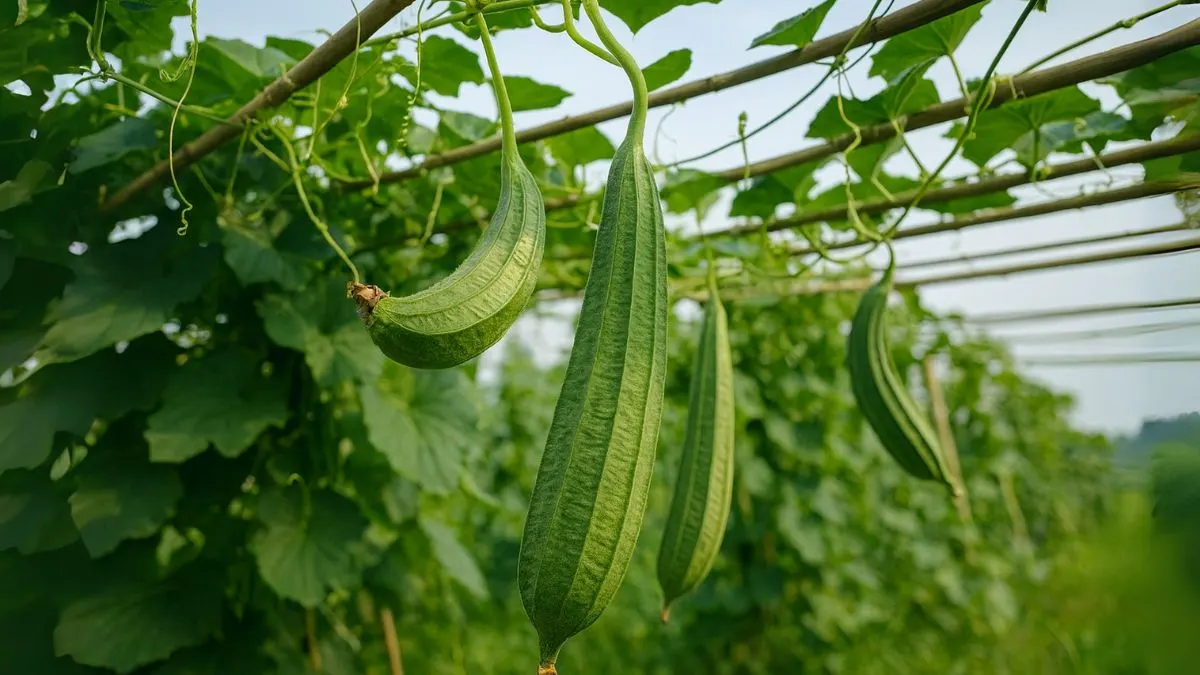Cucurbits are some of the most rewarding vegetables to grow during the monsoon season. Their fast growth, delicious yield, and resilience to seasonal rains make them a gardener’s favorite across the world. From cucumbers and gourds to melons and pumpkins, this family of vegetables is versatile and nutritious. In this guide, I’ll take you through the step-by-step process of growing cucurbits successfully, with tips drawn from my own gardening experiences.
Why Grow Cucurbits in Monsoon?

- They thrive in warm, humid climates, making the rainy season ideal.
- Cucurbits require less maintenance compared to many other vegetables.
- They offer a quick harvest, often within 50–70 days of sowing.
- Popular worldwide—from backyard gardens in the USA and Canada to traditional kitchen gardens in India.
When I first tried growing cucumbers during the monsoon, I was amazed at how quickly they covered my trellis with lush green vines, rewarding me with crisp fruits within weeks.
Choosing the Right Spot
Cucurbits love sunlight and fertile ground. For best results:
- They can be grown by planting seeds in warm, fertile soil with full sunlight.
- Choose a site with at least 6–8 hours of direct sun daily.
- Protect the plants from waterlogging by selecting slightly elevated beds.
Also Read: Why Avocados Are Called Nature’s Butter Fruit
Soil Preparation
Healthy cucurbits begin with healthy soil.
- Cucumbers grow well in the soil which is moist and well-drained.
- Loamy or sandy-loam soil enriched with compost works best.
- Unlike heavy feeders, many cucurbits are grown without manure or with a little organic manure.
- Ideal soil pH: 6.0–6.8.
I once tried planting bottle gourd in clay-heavy soil, but the roots struggled with drainage. After mixing in sand and compost, the plants thrived much better.
Planting Cucurbits
1. Seed Sowing
- Plant seeds directly in the garden, 1 inch deep, and space them 2–3 feet apart.
- Sowing is best done at the start of monsoon when the soil is warm and moist.
2. Transplanting
- While direct sowing is common, seedlings can also be started in trays and transplanted when they are 2–3 weeks old.
- Handle transplants carefully, as cucurbit roots are sensitive.
3. Watering Guidelines
- Provide consistent moisture without waterlogging.
- Drip irrigation is highly effective to keep soil evenly moist.
- Water early in the morning to minimize fungal infections during the wet season.
Also Read: Why Aglaonema Evergreen Is the Perfect Indoor Plant for Beginners
4. Support and Trellising
Many cucurbits are climbing or trailing plants.
- Use bamboo stakes, trellises, or netting to support growth.
- Vertical gardening saves space and improves air circulation.
- Trellising also reduces the risk of fruits rotting on wet soil.
5. Fertilization Needs
- Apply compost or vermicompost at the time of planting.
- A light top-dressing of organic fertilizer after flowering helps boost fruiting.
- Avoid over-fertilization, which leads to leafy growth but fewer fruits.
6. Pest and Disease Management
Monsoon brings pests and fungal infections.
- Common pests: aphids, fruit flies, and beetles.
- Natural remedies: neem oil sprays and introducing beneficial insects.
- To prevent fungal diseases, ensure good air circulation and avoid overhead watering.
7. Harvesting Cucurbits
- Most cucurbits are ready for harvest within 50–70 days.
- Harvest cucumbers when they’re medium-sized, gourds when tender, and melons when fully ripe.
- Regular picking encourages more fruit production.
Also Read: Step-by-Step Guide to Planting Onion Sets for Big Harvests
Key Requirements for Growing Cucurbits
Requirement |
Details |
Sunlight |
Full sunlight, 6–8 hours daily |
Soil |
Cucumbers grow well in the soil which is moist and well-drained; loamy or sandy-loam |
Fertilization |
Cucurbits are grown without manure or with a little organic manure |
Planting |
Can be grown by planting seeds in warm, fertile soil with full sunlight |
Watering |
Keep soil evenly moist; avoid waterlogging |
Climate |
Best during monsoon—warm, humid conditions |
Environmental Benefits
- Growing cabbage can have a positive impact on the environment—and cucurbits are no different.
- Their broad leaves provide soil cover, reducing erosion.
- Cucurbit vines enrich garden biodiversity by attracting pollinators.
- Growing your own vegetables reduces reliance on market produce, cutting carbon footprints.
Personal Experience
When I first experimented with cucurbits in the monsoon, I planted pumpkin seeds directly into a patch of sandy-loam soil. I didn’t add much manure, only a handful of compost. Despite my doubts, the vines spread rapidly, and within two months, I had several medium-sized pumpkins ready to harvest. The key, I realized, was providing enough sun and ensuring the soil remained moist but well-drained.
Cucurbits are the ultimate monsoon special vegetables. They’re easy to grow, rewarding, and environmentally friendly. With the right care, your garden can be overflowing with cucumbers, gourds, and melons this rainy season.






